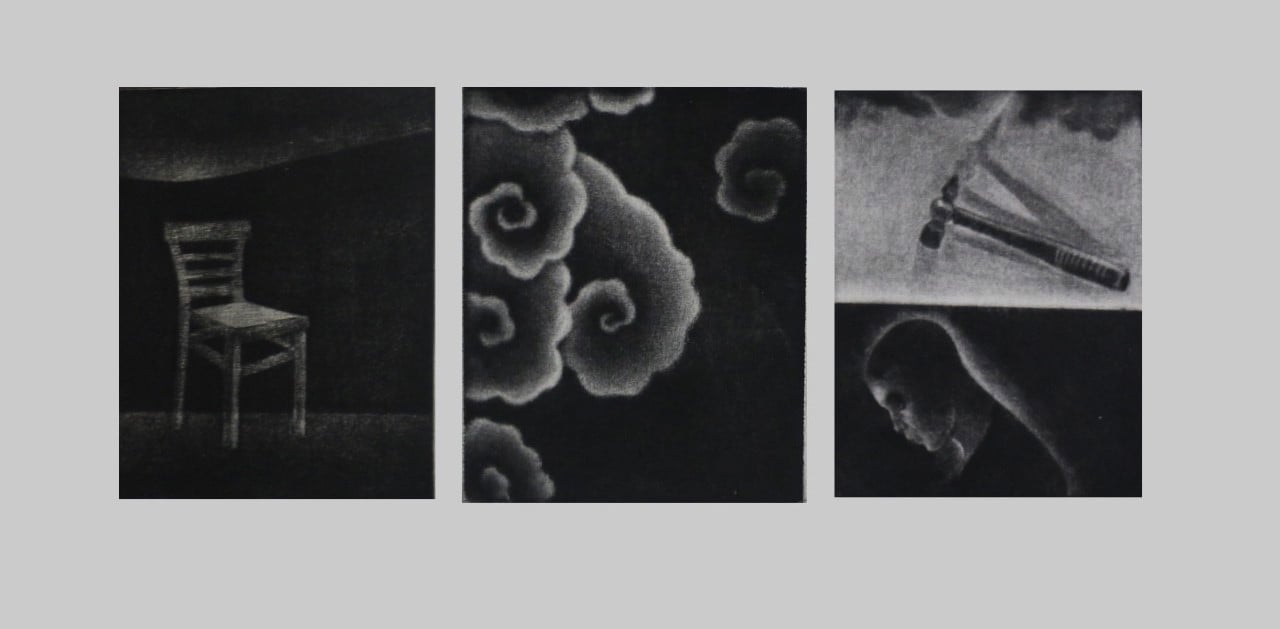
A recent group exhibition of international printmakers explored new possibilities in the genre of printmaking

As the popularity of reading on computer and purchase of Kindles has not turned printed books redundant, similarly, the change in printing technology has not affected the historical methods of printmaking -- at least not gravely.
Students in art schools continue to choose printmaking as a major subject; however, there is a visible decline of this genre at art institutions and in the gallery circuit. The discipline itself is facing many challenges. The first amongst these is the contrast between technique and technology. Traditional discipline was based upon lithography, woodcut, etchings and screen-printing, techniques that are generally being replaced by digital printing.
At one point, offset printing posed the same problem/crisis but soon it was incorporated in lithography, photo etching and screen-printing. One wonders if the same solution -- of combining new means of image-making -- would serve the purpose. Otherwise, one must resign to abandoned workplaces filled with printing presses and other equipment along with idle teachers and inactive studio technicians.
The competition between a new way of image-making and a previous practice is not specific to printmaking. Miniature painting had to, for a long time, deal with the same question, till artists trained in that genre like Shahzia Sikander, Imran Qureshi, Aisha Khalid, Muhammad Zeeshan, Hasnat Mehmood and many others started to express their ideas and imagery in different formats like video installation, site-specific installation, mixed media construction etc.
It appears that the discipline of printmaking in Pakistan is still in its infancy. The insistence on learning conventional methods and producing works with these techniques is a norm but many artists have moved away lately.
Actually, the matter of forsaking a traditional practice in favour of new idiom demands a deeper inquiry because a creative person does not choose his medium and method in response to pressures or fashion of his times. In most cases, the imagery and ideas are created in a manner that the issue of method and medium becomes a minor debate.
This was observed in a recent group exhibition of ‘International Printmakers’ curated by Zaira Ahmad Zaka and Muhammad Atif Khan. Titled Borders and Beyond, it comprised works of seven artists from UK, Pakistan, Netherland and China. An outcome of ‘Zaira Zaka Studio Residency 2016’, the exhibition consisted works in Mezzotint, Inkjet printing, Dry point, Etching, Aquatint, Screen-printing and Acrylic on canvas. It thus opened a wide range for artists, delving between technique and image or between form and content.
Interestingly, the selection of a certain method is sometimes based more on cultural links rather than an individual’s personal whims. For instance, Li Yanbo’s extremely subtle Mezzotints representing grapes, a portion of a papaya, half-eaten food on a plate with knife and fork, and a few plants, in their tonal variations and sensitivity echoed Chinese watercolour painting, especially ink painting, in which multiple shades of a single colour convey details of an object or setting in precise detail; along with its poetical and lyrical aspect enhanced through the distributions of marks, interplay of light and the use of texture. His prints are a perfect example in reference to the dispute or demand of what to paint, because in essence his prints are depictions of ordinary stuff in a normal environment, yet communicated with a human being on a higher level: connecting with him through memory, and shared experiences.
These works signify another important aspect about approaching art. That while encountering a work, regardless of whether it’s a painting, drawing, sculpture, photograph, video, installation or print, the main negotiation that takes place between the maker and viewer is not about recognising or reading the visuals or their sources, but having the sensation of being in the presence of reality. A feature that makes works of art real rather than merely realistic; hence the detailed views of familiar things and settings that illustrate our existence.
However, our life is not limited to our immediate surroundings. The way we are formed, is a result of many generations, races and communities interacting with each other, so everyone is related to everyone else. Even a person living in an isolated island of Pacific Ocean must have a blood bond with other tribes of a faraway territory. Likewise, our art, culture and customs are a blend of various influences from different parts of the world, a phenomenon that was happening much before the coinage of the term ‘globalisation’.
Gea Karhof, an artist from Netherlands, draws attention to that collective cultural manifestation in human history. In her hand-coloured etchings with gold leaf, one deciphers how the world of today is shaped with elements that may surprise us; because there were interactions between cultures long before the swift means of communication and market demands. For instance, in traditional Indian miniature painting, one finds traces of Chinese clouds, Flemish fields, English envoys, and Biblical themes. Karhof composes her imagery from sources as diverse as Pharaoh’s Egypt, Japanese woodcuts, Arab manuscripts and Walt Disney’s cartoon characters. She creates surrealistic situations by combining present-day buildings and imaginary beings (fairies, angels etc.) in her etchings.
A similar sort of sensibility is observed in the Archival Inkjet prints of Mohammad Atif Khan. Along with joining visuals from various sources, his compositions indicate connectivity and continuity of time; hence the figure of Mughal ruler surrounded by the barriers of present era. Khan develops his imagery in the structure of a pattern; so the work, besides being a print, is linked to Indian miniature painting as well as the traditional Islamic geometry. Like him, attempts to explore other dimensions of ‘printmaking’ are visible in the works of other participants too, especially Mezzotints and mixed media of Nan Mulder and acrylic on canvas by R.M. Naeem, demonstrating the latter’s immaculate level of skill and rendering.
With the wide variety of subjects and diverse possibilities available for printmakers, the exhibition moved beyond the narrow confines of the discipline called printmaking.